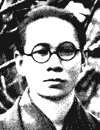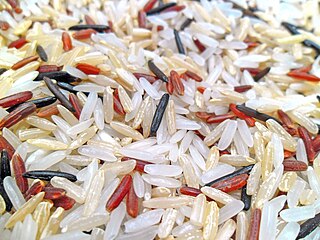
Ink wash painting, or sumi-e (墨絵), is a type of East Asian brush painting that uses black ink – as used in East Asian calligraphy – in different concentrations. Emerging in Tang dynasty China (618–907), it, and associated stylistic features, overturned earlier, more realistic techniques. These associated features include a preference for shades of black over variations in colour, and an emphasis on brushwork and the perceived "spirit" or "essence" of a subject over direct imitation. It flourished in the Song dynasty (960–1279), as well as Japan after it was introduced by Zen Buddhist monks in the 14th century.

Chinese painting is one of the oldest continuous artistic traditions in the world. Painting in the traditional style is known today in Chinese as guóhuà, meaning "national" or "native painting", as opposed to Western styles of art which became popular in China in the 20th century. Traditional painting involves essentially the same techniques as calligraphy and is done with a brush dipped in black ink or coloured pigments; oils are not used. As with calligraphy, the most popular materials on which paintings are made are paper and silk. The finished work can be mounted on scrolls, such as hanging scrolls or handscrolls. Traditional painting can also be done on album sheets, walls, lacquerware, folding screens, and other media.

Rinpa, is one of the major historical schools of Japanese painting. It was created in 17th century Kyoto by Hon'ami Kōetsu (1558–1637) and Tawaraya Sōtatsu. Roughly fifty years later, the style was consolidated by brothers Ogata Kōrin (1658–1716) and Ogata Kenzan (1663–1743).

Tomioka Tessai was the pseudonym for a painter and calligrapher in imperial Japan. He is regarded as the last major artist in the Bunjinga tradition and one of the first major artists of the Nihonga style. His real name was Yusuke, which he later changed to Hyakuren.

Japanese painting is one of the oldest and most highly refined of the Japanese visual arts, encompassing a wide variety of genres and styles. As with the history of Japanese arts in general, the long history of Japanese painting exhibits synthesis and competition between native Japanese aesthetics and the adaptation of imported ideas, mainly from Chinese painting which was especially influential at a number of points; significant Western influence only comes from the later 16th century onwards, beginning at the same time as Japanese art was influencing that of the West.
Events in the year 1820 in Art.

Ike no Taiga was a Japanese painter and calligrapher born in Kyoto during the Edo period. Together with Yosa Buson, he perfected the bunjinga genre. The majority of his works reflected his passion for classical Chinese culture and painting techniques, though he also incorporated revolutionary and modern techniques into his otherwise very traditional paintings. As a bunjin, Ike was close to many of the prominent social and artistic circles in Kyoto, and in other parts of the country, throughout his lifetime.

Nanga, also known as Bunjinga, was a school of Japanese painting which flourished in the late Edo period among artists who considered themselves literati, or intellectuals. While each of these artists was, almost by definition, unique and independent, they all shared an admiration for traditional Chinese culture. Their paintings, usually in monochrome black ink, sometimes with light color, and nearly always depicting Chinese landscapes or similar subjects, were patterned after Chinese literati painting, called wenrenhua (文人画) in Chinese.

Hanabusa Itchō was a Japanese painter, calligrapher, and haiku poet. He originally trained in the Kanō style, under Kanō Yasunobu, but ultimately rejected that style and became a literati (bunjin). He was also known as Hishikawa Waō and by a number of other art-names.

Gyoshū Hayami was the pseudonym of a Japanese painter in the Nihonga style, active during the Taishō and Shōwa eras. His real name was Eiichi Maita.
Tani Bunchō was a Japanese literati (bunjin) painter and poet.

The Southern School of Chinese painting, often called "literati painting", is a term used to denote art and artists which stand in opposition to the formal Northern School of painting. The distinction is not geographic, but relates to the style and contents of the works, and to some extent to the position of the artist. Typically, where professional, formal painters were classified as Northern School, scholar-bureaucrats who had either retired from the professional world or who were never a part of it constituted the Southern School.

Kenzo Okada was a Japanese-born American painter and the first Japanese-American artist to work in the abstract expressionist style and receive international acclaim.

Matsumura Goshun, sometimes also referred to as Matsumura Gekkei, was a Japanese painter of the Edo period and founder of the Shijō school of painting. He was a disciple of the painter and poet Yosa Buson (1716–1784), a master of Japanese southern school painting.
Okada Hankō was a Japanese painter during the Edo period. He was the son of the painter and rice merchant Okada Beisanjin. He built a studio and home near Osaka on the bank of the Yodo River, but was forced to move to Sumiyoshi-ku, Osaka, due to a rebellion.

Senchadō is a Japanese variant of chadō. It involves the preparation and drinking of sencha green tea, especially the high grade gyokuro type.

Okuhara Seiko was a Japanese painter.

Ike Gyokuran was a Japanese Bunjinga painter, calligrapher, and poet. She was famous in Kyoto, Japan, during her lifetime, and she remains a celebrated artist in Japan.
Chō Kōran was a Japanese poet and artist, known for her study of Chinese arts and specialization in bunjinga ink paintings. She traveled extensively across Japan with her husband, fellow poet Yanagawa Seigan, and her poetry and artwork was published in several volumes. Later in life, she founded a private school and taught Chinese poetry to women.

Bunjinbana is a style of ikebana that is inspired by traditional Chinese landscapes. It developed from the Bunjinga movement among different Japanese artists of the late Edo period, who however all shared an admiration for traditional Chinese culture and paintings.




















